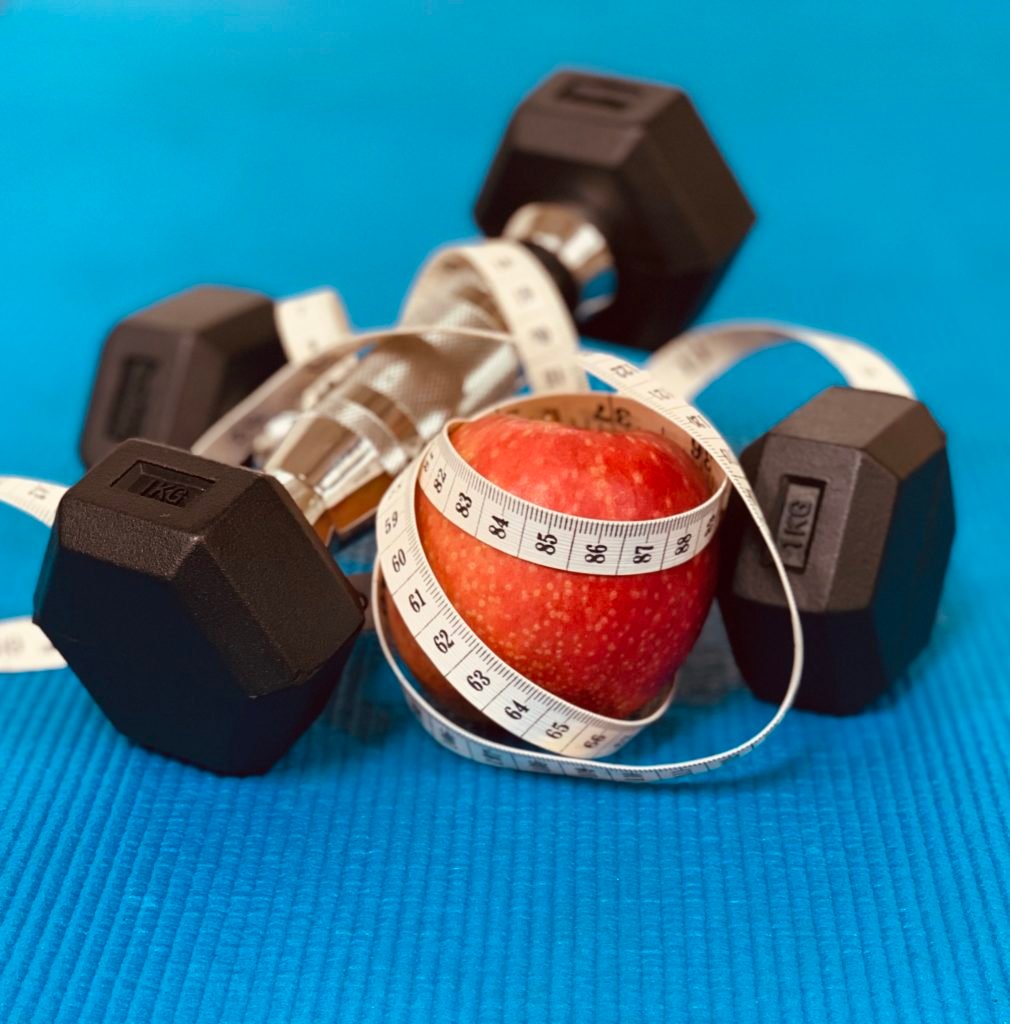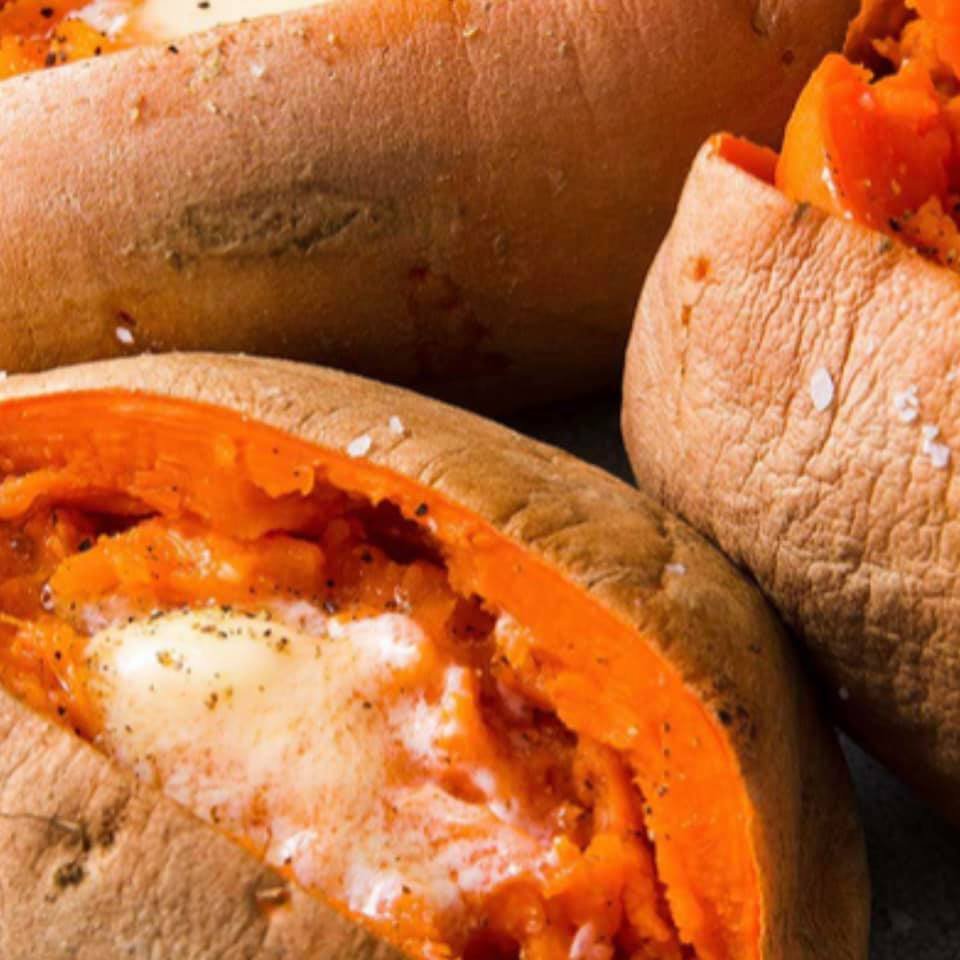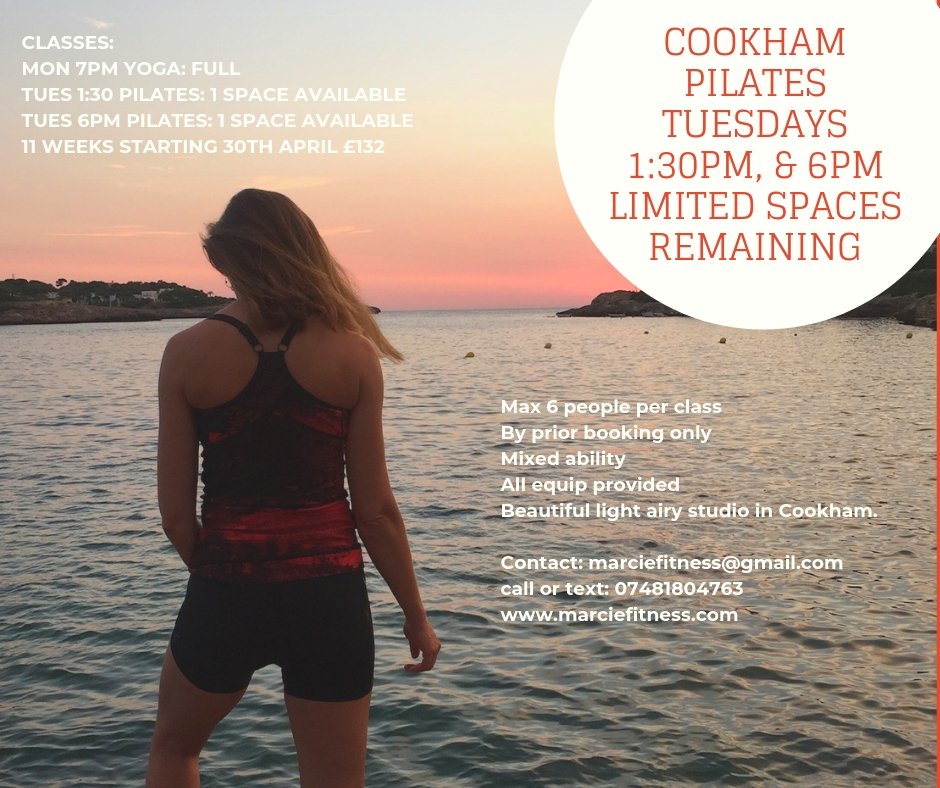
Getting ready for evening yoga on the terrace

be the best version of you


Have you plateaued on your weight loss and fitness goals despite cutting calories and endlessly weighing out foods and counting calories whilst pounding the treadmill?
Perhaps a closer look at the types of foods you are eating and a new exercise regime is your next step.
According to expert Shawn M. Talbott, PhD, nutritional biochemist and former director of the University of Utah Nutrition Clinic “As a rule of thumb, weight loss is generally 75 percent diet and 25 percent exercise. An analysis of more than 700 weight loss studies found that people see the biggest short-term results when they eat smart.”
With food quantity and type being such an important part of weight loss or weight management I was interested to read a recent article from the BBC about a study on the effects of processed food versus a non-processed food diet.
In summary:
Twenty people gave up a month of their time to live in a laboratory.
For a fortnight they were given either ultra-processed meals or unprocessed ones and then the diets were switched for the second half of the study.
The participants were allowed to eat as much as they wanted and researchers closely monitored what passed their lips.
During their ultra-processed foods fortnight, the volunteers, on average, ate an extra 508 calories a day and put on 2 pounds.
The processed food group also had higher levels of the hunger hormone – ghrelin
The 2 pounds of gained weight would most likely be fat. Each pound of fat consists of 3500 kcal so an extra 500 kcal per day over 7 days or 1 week equates to a pound of fat and over 2 weeks- you guessed it – 2 pounds of fat just as experienced by the volunteers.
The meals were matched for sugar, other carbohydrate, fat and fibre content. That is a very interesting point don’t you think? The experts don’t understand the reasons behind the weight gain for the processed food group.
“I don’t eat much processed food” I hear you all shouting in unison!! The food consumed in this study was not the fast food burger and chips, pizza and chips that we instantly think of when we think “processed food” . Basically anything with more than 5 ingredients is a marker for a potential “processed food” – something which I’m sure we could all find in our cupboards if we looked! Looking at a loaf of bread from a supermarket marketed as “ancient grain”, “farmhouse” and “super seeded” (so seemingly quite healthy then) revealed no less than 28 ingredients
This study shows how complex our bodies are and how the quality of the fuel we put into it matters to hormone balance, body composition, weight and overall health.
Have you plateaued on your weight loss and fitness goals despite cutting calories and endlessly weighing out foods and counting calories whilst pounding the treadmill?
Perhaps a closer look at the types of foods you are eating and a new exercise regime is your next step.
With new personal training clients I offer a full diet review giving recommendations for diet improvements including food swaps. We then embark on a tailored fitness program after carrying out a full postural analysis identifying muscle imbalances, over-tight, overly dominant and/or weak muscle groups. You will build your cardiovascular fitness, overall strength and improve body composition, health and posture.
What are you waiting for? Get in touch today to start your road to meeting your goals and being the best version of you.
Read the BBC news article detailing the study by clicking this link.
See below for a delicious healthy vegetarian recipe for a mid week dinner.
I tried this recipe card from Waitrose tonight with a few modifications (see below the photos for swap details) and all the plates were clean! That’s not bad for teenage boys faced with a nutritious plate that includes the words “quinoa” and “spinach”
I love this for a veggie day. It’s easy, quick, tasty and healthy.



I swapped Pre-cooked quinoa in recipe for organic quinoa which I cooked with a vegetable stock cube for about 15-20 mins until all the liquid absorbed
I also swapped out olive oil and cooked the sweet potato and onion in organic cold pressed virgin coconut oil. Why? I never cook with olive oil these days – more on that another time……….

This week in Yoga, Pilates and PT. 8th May 2019 it’s all about Posture!
Great posture makes you look and feel more confident, clothes sit better on your frame, you move better, you perform better in sport – it’s a win win win. Read on to find out how we looked at postural work this week in yoga, Pilates and Personal Training.
This week we have worked on strengthening the musculature of the posterior chain (think all the way down your back, bottom and back of legs) whilst opening and stretching the anterior chain (think chest, abdomen, hip flexors , front of thighs).
Yoga:
This week we worked on deepening our understanding of Urdhva Mukha Svanasana or upward facing dog.
Upward facing dog is an difficult pose to get right, especially if the shoulder position is naturally a little rounded so we first worked on opening the chest and mobilising the shoulders. We made good use of the mirrors in the studio to observe those pesky winging scapula and bring them into correct alignment.
But it’s not just about shoulders – the entire trunk both front and back work very hard in this position to keep the correct spinal alignment and prevent over extension in the lower (lumbar) spine. The legs are working hard too to maintain alignment and not roll out. The pose is working the whole body to get the lift and curving extension to the spine. As beginners we stayed for a few breaths, advanced practitioners may stay for several minutes.
Pilates:
This week we worked with single leg kick to work into the glutes (bottom muscles). Again the set up of this exercise is crucial to achieve the correct action into the glutes and hamstrings whilst protecting the lumber (lower) spine. Collapsing through the abdomen or losing the lift of the thighs results in losing the benefits of the exercise altogether. I am certainly feeling aching bottom muscles today!!
Personal Training:
There are many gym exercises that target the posterior chain. For one client we worked on first stretching and opening the chest and then with the bench for the dumbbell reverse fly, among many exercises in this session, which targeted the scapula retractor muscle group. We kept the weights very low and focused on correct set up of the shoulders at the start of each movement. Focus was then on controlled movement and strong scapula retraction. The aim here is to improve posture and counter the hours spent training on the bike – this client is a keen road cyclist and the hours spent in a forward, flexed position on the bike can lead to poor everyday posture if it is not complemented with a balanced program of weights and stretching.
Summary:
Strong functioning glutes, an open chest and strong back are huge contributors to great posture as well as better performance and endurance in your chosen sport.
Great posture makes you look and feel more confident, clothes sit better on your frame, you move better, you perform better in sport – it’s a win win win
As an advanced level 4 personal trainer, and a yoga and Pilates teacher I often combine the synergies of these three disciplines to achieve an end goal. I bring Pilates principles into gym based, weight based exercises, I bring yoga knowledge and breathing into our stretching and cool down. Sometimes you may spot a yoga based movement in a Pilates class and I certainly use Pilates principles in teaching correct yoga asanas (poses).
If you think you could benefit from improved posture and a more targeted personalised approach to your fitness then get in touch.
See testimonials and contact page for details.

Well done to the Monday evening yoga group. A great start to the beginning of term.
We revisited Utthita Trikonasana and I talked about the importance of firming the legs, lifting the kneecaps and drawing the femur into its socket as some of the many cues I gave. Why is this important?
If the thigh bone (femur) doesn’t sit right in its ball and socket joint it isn’t at its most stable position
If the body is struggling to maintain the firmness in the legs and around the hips the body compensates by overworking the joints and supporting ligaments – which will eventually lead to wear and tear on those joints. Hence my instruction to keep working the legs strongly in this pose. It is important also to rest when you feel that the muscles are tiring and you are starting to “hang off of the ligaments”
We will continue this term to deepen the knowledge of the poses and the mind body connection in the poses to keep the body healthy and get the benefits of the poses. For Utthita Trikonasana the benefits are, amongst others; to stimulate and improve circulation, strengthen hips, back, and legs, improve flexibility in hamstrings, groins and hips, improve balance and stimulate the kidneys.

Well done to the Tuesday pilates groups. Today being the start of term I thought a quick tour through the six principles of Pilates would be appropriate.
The application of the principles to the Pilates method of exercise is part of what makes it unique in the fitness world. Without these 6 principles you are not getting the benefits that the Joseph Pilates method intends. Said in another way: without these 6 principles the exercise is not Pilates!
Joseph Pilates originally called his work ” Contrology.” He considered this to be a body-mind-spirit approach to movement. What follows is an overview of the 6 principles
1. Centering: This concept is defined as physically bringing the focus to the center of the body, the powerhouse area between the lower ribs and pubic bone. Cues given are “zipping up“, “center yourself”, “engage your powerhouse”. I often break it down into separate instructions to “breathe in, pull up on pelvic floor and pull navel to spine”. Each movement starts from this centering and you should rest for a breath when you feel those muscles tire. Performing exercises without correct centering is to be avoided as it can result in injury and training your muscles in the wrong way.
2. Breath: Joseph Pilates advocated using a very full breath in his exercises. He spoke about thinking of the lungs as a bellows, using them strongly to pump the air fully in and out of the body. In Pilates we breathe in through the nose and out through the mouth. Most Pilates exercises coordinate with the breath. Different breath patterns can be used to change the difficulty of an exercise. We never hold the breath in Pilates.
3. Concentration: Each movement has a lot going on. We have to concentrate and keep a part of the brain on the center, a part on the breath and a part on the moving limbs. Without concentration you lose the method and the benefits. Full attention and full commitment to each exercise gives the best results.
4. Control: We aim to complete every Pilates exercise with complete muscular control. Each part of the body has a role, either to stabilise and remain still or to move with fluidity and precision and it’s all being controlled from the mind using your concentration.
5. Precision: In Pilates there is an appropriate place, alignment and angle for each part of the body within an exercise. I often give cues encouraging the attention to various areas to help students achieve correct alignment and understand when they may be fatiguing so that precision and therefore benefits are being lost. I call these “ precision markers” If you reach a point where you lose the precision marker cue please stop and rest for a breath or two then rejoin. It’s quality over quantity every time!
6. Flow: Once we have mastered the first 5 principles we aim to flow the movements. This takes great concentration and muscle control as well as strength and flexibility to achieve. Flow is our goal for each movement and may not be achieved in your early sessions as it takes time to master the other 5 principles which underpin it.
I hope you found this a useful recap of the Pilates principles. There is a lot to take in and I do tend to talk for the entire hour (!!!), so to have some of it here in black and white to refer to is hopefully a useful tool.
Below – the man himself, Joseph Pilates, performing the full advanced version of “scissors”. We did this exercise today but modified with leg position and also use of the Pilates ball to give us a little assistance. All classes are planned to give exercises from beginner to advanced to ensure everyone can participate and everyone is challenged.
Have a great week

Absolutely! But make it the right sort and in the right quantity and you can be smug that you are actually doing your body a favour while enjoying a treat.
Dark chocolate with minimum 70% cacao solids is the stuff to go for.
A mini 15g bar ( see pic) is perfect after dinner treat.
Dark good quality chocolate contains flavanols which may help lower ‘bad’ LDL cholesterol.
It’s also a source of iron, magnesium and zinc which support many functions in the body including the immune system, muscle and nerve function and energy levels.
Too much of anything is not good so keep it to two squares or mini bar as seen in the pic and you will be getting a nutrient boost while not over dosing on saturated fat and calories. Enjoy!

Sweet potatoes instead of white potatoes…
Rich in fibre they help lower bad cholesterol, Rich in vitamin A they support the immune system
Rich in manganese they support blood sugar regulation
A source of calcium, magnesium and potassium to support muscle function.
All round packed with loads of good stuff
Eat them roasted whole with small amount of butter and seasoning (not margarine under any circumstances!!) add tuna or chicken with mixed salad for a tasty, easy, nutritious lunch
Or, cube them with cubed celeriac, cubed butternut squash and roast with a little coconut oil ( stable at high temperatures) and have with fish and steamed broccoli and kale for an easy nutritious dinner

Classes starting 29th/30th April 2019 – limited spaces available!
Would you like to be stronger?, more flexible?, more toned? Would you like to reduce lower back pain? Shoulder and neck pain?
Would you like to be taught in a small exclusive group where you receive lots of individual attention to ensure you perform the exercises correctly?
Then, please come along to one on my Pilates classes.
I am qualified in Pilates, Yoga, and I am an advanced Personal Trainer with a lot of equipment to keep sessions interesting and fun. I use my knowledge of bio-mechanics, advanced stretch, postural analysis and myofascial release techniques along with the yoga and Pilates exercises to give a targeted approach to improved posture, flexibility and strength
Classes take place in my beautiful airy studio with vaulted ceiling and weather permitting we take it outside onto the terrace.
Please see my ad below and take a look at the testimonials page.
I look forward to hearing from you!

See the great article below at training peaks. It discusses the pros and cons of yoga for endurance athletes.
Here at Marcie Fitness I teach an Iyengar style yoga that is both strengthening and restorative. We use blocks, bricks and belts to allow your body to achieve poses with the correct alignment. Over time you will build strength, flexibility and body awareness which will enhance your chosen sport. However the pace is slow and thoughtful with time spent at the end of each session in relaxation. Participants report better sleep, which in this hectic paced world we could all do with!
Blocks, bricks and belts can also be used to make poses easier – very useful on rest days where you want to take things easy but still move muscles and joints and get the restorative benefits of the relaxation part at the end of class!
Why not give it a go. There are limited spaces Tuesdays at 7:30pm